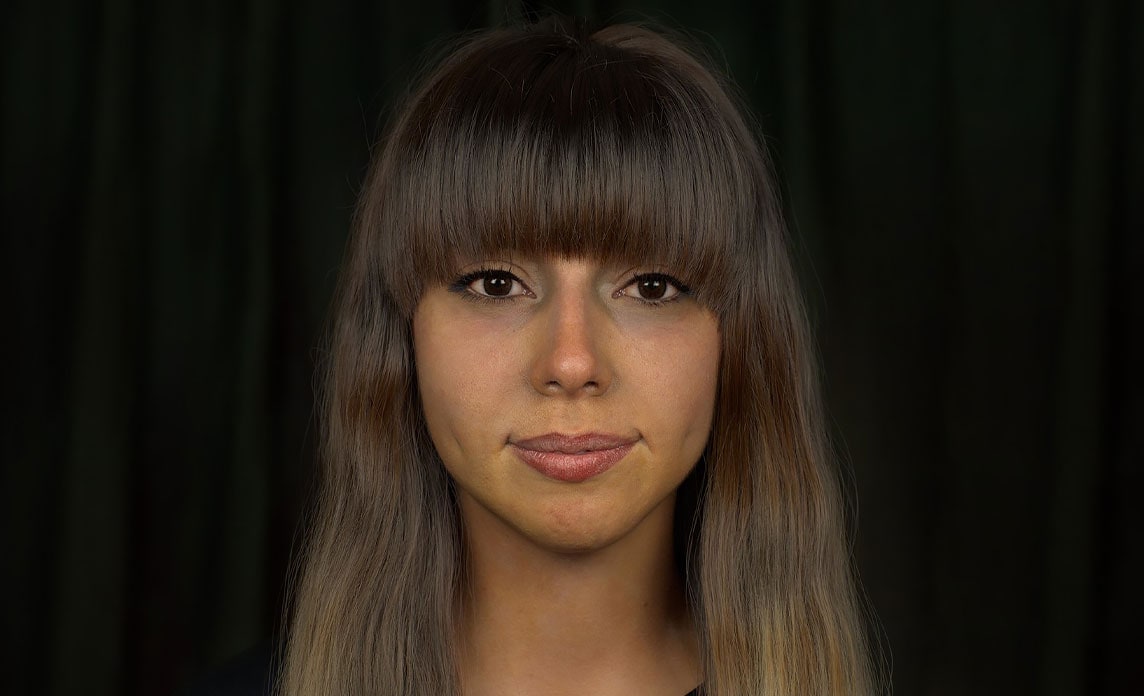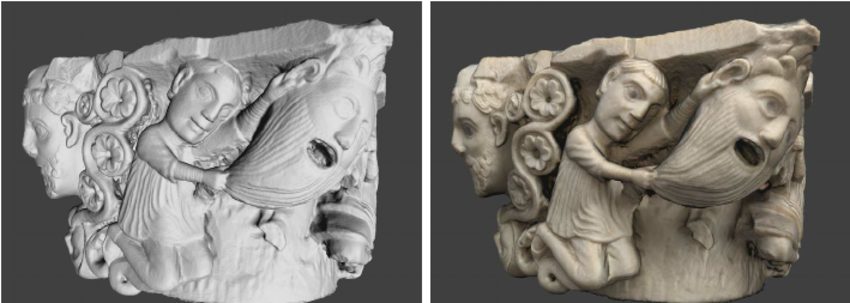3D Modeling
What Is 3D Modeling For Games?
Modeling or 3D modeling for games is the act of creating the geometry that the game engine renders to the screen. This can be characters, environments, props, or any other thing that’s rendered in a 3D game. These objects on their own are plain, with no surface detail on them to begin with, this is then added at the texturing phase.
Depending on the company, the work of 3D modeling could be handled by a specific 3D Modeler, as is common in bigger companies. Most often in small to medium-sized companies, it will be handled by an Artist who will take care of the modeling, sculpting, texturing, and material set up. Sometimes they will also take care of rigging and skinning as well as animation although usually these positions will be held by dedicated Technical Animators and Animators respectively.
How 3D Modeling For Games Works
The 3D modeler will go into their 3D software package and create whatever object they have been tasked with. This will involve building it up using points, edges, and polys/tris.
Vertices
Vertices or Points are the most fundamental building block when 3D modeling. There are points in 3D space that have their coordinates recorded as their X, Y, and Z coordinates. When saved, the file will record all of these points’ positions and will refer to them when working out how the rest of the model should be built.

Edges
Edges or Lines are drawn between two points to create a defined edge. These lines are used so that the program knows how you want the points that are floating in 3D space to interact. These edges can be marked as either ‘soft’ or ‘hard’ which defines how they are rendered. Soft edges will give a smooth appearance, this is used for organic shapes like characters or smooth surfaces. Hard edges will give a hard and defined shape which is used for ‘hard surface’ modeling which refers to manufactured rather than organic objects and will be used for things like the edges of tables or swords that need a hard defined shape that comes to a point.

Polygons

Every object you see in 3D games is made up of Tris. This can range from two Tris making up a square poster with some artwork textured on it to the main character that’s made up of tens of thousands of them. As computers become more powerful the limits that we are held to as artists when it comes to polycounts are flying up. It can be quite common for scenes to be made up of many millions of polys these days.
What Programs Can I Use For 3D Modeling?
There’s a large number of 3D programs to use for game development and the choice can be quite daunting. Luckily most of them specialize in certain areas so it’s easier to decide based on what you want to use it for. We will cover a few of the most popular ones but there are
3ds Max
3ds Max is a product by Autodesk and is one of the industry standards in video game development. It is the sister program to Autodesk’s Maya program. It used to be the case that 3ds Max would be the preferred program of artists due to the modifier workflow giving an easier way to model, but the line between the two programs has blurred and now it is more a matter of personal taste.

We recommend getting to grips with both programs so that you are prepared to use whatever a company already has but if that’s not possible it doesn’t take more than a few days to readjust and figure out where everything is.
Maya
Maya is the alternative to 3ds Max. It’s also made my Autodesk so has a lot of the same features. It’s also considered industry standard within the games industry. It used to be that Maya was the preferred program for riggers and animators but as the programs become more similar it is more down to personal preference.

As mentioned above, if you plan to work in the games industry we recommend trying to get to grips with both Maya and 3ds Max as you will most likely have to use whatever the company owns licenses to. Luckily they are pretty easy to switch between once you understand the basics. In my personal experience, Maya is used more often than 3ds Max these days but I’m not sure about the official numbers.
Blender
Blender is the favorite modeling software for hobbyists and people on a budget as it’s absolutely free. It’s also open source so people can add to it as they see fit. It features many of the tools you would expect from the other programs which are incredible when considering it’s free.

It’s not industry standard so we still recommend getting acquainted with 3DS Max and Maya. That being said it’s the perfect place to start practicing and learning if this kind of work is for you. All of the skills you learn in 3D modeling will easily transfer between programs as soon as you learn where everything is and what everything is called in other software packages.
Cinema 4D
Cinema 4D is a 3D modeling package from Maxon. It’s considered one of the easier programs to learn so it’s a great place to learn. It’s known to be a pretty good overall package but falls short compared to other programs that specialize in a certain area such as games.

Whilst it is cheaper than 3ds Max or Maya it isn’t industry standard, so it is probably better to stick to Blender on a budget or go with an Autodesk product if you want to go all in. The main reason to go with Cinema 4D would be for an easier barrier to entry to get you started.
Modo
Modo is a 3D modeling program by Foundry. It’s best known for its subdivision surface modeling as it was originally started for just that purpose. It also has a well-rounded boolean-based workflow which makes it stand out from the crowd. It’s made by the same company that makes Nuke, a popular compositing tool, so it’s particularly popular with TV and Filmmakers.

It’s not an industry-standard tool when 3D modeling for games but it’s a great program nonetheless. If the toolset appeals it is more than enough to use for game development.
Houdini
Houdini is a 3D program created by SideFX. It has a large focus on special effect simulation and is used throughout the film and TV industries. It’s able to create truly amazing effects but is known for being quite complicated to use.

Although it is industry-standard in film and TV it’s not used for games as it is specialized purely in those areas. If you’re interested in TV and film VFX you can’t find much better but if you’re aiming for games there are better choices to get you there.
ZBrush
ZBrush is primarily a sculpting program, another key part of the game artist’s workflow, but it can also be used for modeling the base forms as well. The ZBrush workflow works best with organic objects but can also be used for hard surface objects. Rather than the traditional moving verts and using modifier workflows of most programs you work in ZBrush in a similar way to a clay sculptor, adding and subtracting directly from the surface on a very high poly model.

It’s not generally considered a primary modeling program and when working in the industry you will most likely have a standard modeling tool alongside the sculpting program. That being said almost all workplaces will use ZBrush so it’s definitely worth getting to grips with and can certainly be used as part of the base modeling workflow as well.
How Do I Create Models For Games?
One of the key differences in modeling for games as opposed to film and TV is that games will use a lower poly workflow. This is due to the fact that generally speaking, games have to be worked out and rendered to the screen in real-time based on the player’s inputs. Movies and TV can be pre-rendered, meaning everything can be pre-computed and put into video form, and their only limit is how long it takes for their render farm to create it. Games have come a long way over the years and closing the gap on movies in terms of what we can produce, but the overall poly count is something we still have to b
As with most forms of art, there is a virtually limitless amount of ways of working to achieve what needs to be made. Depending on the program you are using and the result you want to achieve you may use a myriad of different techniques. We’ll go through a few of the most common ones here but bear in mind that not all techniques will be available in all programs.
Box Modeling
Box modeling is the act of taking a ‘primitive shape that is pre-made in the 3D modeling software and building out from there. These often start from shapes such as boxes and spheres, hence the name. You will work on this shape using modifying tools within the program, such as ‘extrude’ which will pull a face outwards from the surface, or the cut tool to make new points and edges.

Spline Modeling
Spline modeling is when you place down a ‘spline’ or ‘curve’ which is a line that plots out a path within the program, this can then be used as a foundation of the shape you wish to create.

Digital Sculpting
Digital sculpting involves working into a mesh using clay-like tools where you add and subtract directly from a surface in the way that a real-life sculptor would. It is especially popular for organic objects such as characters as the workflow lends itself best to that kind of work. You can, however, produce hard surface objects as well.

3D Scanning
3D scanning is where you take a real-life object, for example, someone’s face, and use a 3D scanner to replicate that object in the 3D space. This is a very quick and high detailed way of generating a 3D model if the object is based on a real-life object and you have access to it and a 3D scanner. It can also be used as a starting point to work into more. The downside to this technique is that the objects generated are not usually ready for use immediately and will need to be gone over and corrected by hand. Still, this is a faster way of producing good content if you have access to it.

Procedural Modeling
Procedural modeling is where the computer does all of the work. Often this will be set up by a programmer who will set a certain set of criteria for the computer to use which it will then create an object out of. A good example of this will be where the artist creates a set of buildings and has a programmer set up a system that automatically generates a city from them. Whilst this is difficult to set up and use it is very effective for creating very large pieces of art that may take much longer to do by hand.

Over time you will learn which techniques work best for you and will often use a hybrid of many of the methods laid out here, as well as many others that are not, to make the content you need to produce. Remember, there is no wrong way to do 3D modeling for games all that matters is that the final product looks good and will run on whatever system you plan to run it on.
This is part of our Making Games series that breaks down the basics of creating games. For everything game art-related, check out our Complete Guide To Game Artists.